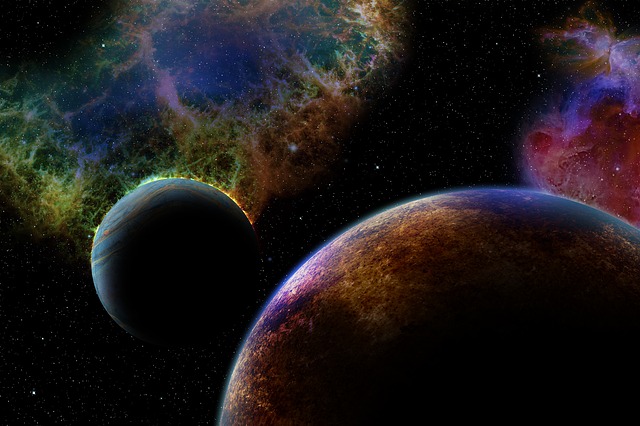
The world of science is weird and mysterious, that’s for sure. But there’s normal weird and there’s weird weird. Here are 7 of those mysteries that are just waiting to be solved.
Alien Megastructure Star
Also known as Tabby’s star, Boyajian’s Star, or KIC 8462852, what differentiates it from all other stars is its unusual dips in brightness. While other stars experience dimming of not more than 1%, this star has experienced a maximum dimming of 22%.
Explanations for the unusual flickering include planetary fragments blocking its view from the Earth, or comets passing in front of it. And then there’s the alien megastructure theory from which it got its name from — the one that says an alien megastructure is orbiting around the star and harvesting its energy. Which do you think is most believable? We’re sure conspiracy theorists would love to have the alien megastructure theory proven.
The Big Bang
When it comes to ‘The Big Bang’ theory, the leading explanation about how the universe began, the more appropriate question would be: what happened before it? Finding out what happened after is still kind of possible. But before? Will we ever know, especially when any evidence or clue was likely wiped in that historic explosion that created everything? Was the Big Bang just one event that will never be repeated, or is it something that happens periodically, which means eventually, another Big Bang will occur and create a brand new Universe?
Black Holes
What happens inside a black hole? What can be found inside a black hole? We don’t know if we’ll ever be able to develop the technology to find out what the answers to these questions are. In the meantime, we have to be content with knowing that a black hole has such an extremely strong gravitational pull that anything that gets sucked into it remains within it forever, and not even light — the fastest known thing there is — can escape it.
Dark matter and dark energy
Nobody has really seen dark matter because of its inherent nature — it’s dark and doesn’t emit any light. But scientists believe it has to exist because there’s no other explanation for what’s causing the strong gravitational pull being experienced by cosmic objects, especially when there’s no visible matter that can possibly be exerting such force on them. As for dark energy, some believe it’s what’s causing the Universe to expand faster than it should. But just like dark matter, its existence is kind of hard to prove because it’s invisible. But if dark energy eventually causes the Universe to continue expanding until it rips itself apart, maybe that will be proof enough of its existence.
Extra spatial dimensions
So far, we know only of three. But the Universe is so huge and profound that it almost doesn’t make sense to think that only three dimensions of space exist.
Fast Radio Bursts
Astronomers were first alerted to their existence in 2007. These fast radio bursts (or FRBs) are random momentary flashes of radio emission that seem to originate from far-off galaxies in the deep regions of space. So far, even with the most powerful radio telescopes, less than two dozen of these FRBs have been detected. And so far, we still have no clue as to what is causing these FRBs. Some theorize that these might be the result of explosive supernovas, or colliding stars, or maybe even stellar flares or gamma ray bursts. The most exciting explanation, of course, is the idea of alien radio transmitters.
Multiverse
First we thought our galaxy was the only one. And then came the discovery that ours is just one of the billions of galaxies that make up the Universe. And now there’s the concept of not just a single Universe but of multiple universes or more appropriately, multiverses — also called alternate universes or parallel universes. Among the many questions related to that concept are: Do the multiverses exist simultaneously on the same plane but in different dimensions that resonate in different frequencies? Is there anything that can be done so one multiverse can interact with another multiverse? Or will overlapping of one multiverse with another result in a cataclysmic ending, or maybe just a ‘cold spot’? So many questions, and almost no reasonable answers.
Planet 9
For so long, our solar system was known to be home to nine planets. After Pluto’s demotion, we had to be satisfied with just 8. And then, with the discovery of the irregular orbits of six faraway objects belonging to the group of trans-Neptunian objects (TNOs), the idea of a hypothetical Planet 9 emerged. Supposedly, the most plausible explanation for the TNOs’ irregular orbit is the existence of a massive planet with a gravitational force strong enough to cause such unexpected orbital anomaly. Planet 9 is predicted to be as massive as 10 Earths and an orbital period of around 15,000 years. To find out if Planet 9 is indeed a planet, however, we’ll have to build even more powerful telescopes.
These are just a few of science’s weird mysteries. Of course, there are many others such as the lost city of Atlantis, the Bermuda Triangle, aliens, UFOs, how life started, how gravity really works, how and why tectonic plates move, what’s under the Stonehenge, and so many more. Many of these questions will perhaps never be answered and mysteries most probably will never get solved. And what’s more, more will probably emerge over time. But then, that’s what science is for, to find answers, right? That said, though, knowing that science has limits makes the argument even more complicated.
Disclaimer: This page contains affiliate links. If you choose to make a purchase after clicking a link, we may receive a commission at no additional cost to you. Thank you for your support!




It would be far more worthwhile to examine the scientific challenges that directly affect life on earth. For example: Can we avoid climate catastrophe? Can we defeat superbugs? Can we make megacities livable? Can we bring population growth under control? How do we cure non-infectious diseases–cancers in particular? How do we cure mental illness? How do we improve the quality of life in old age? How do we preserve and protect biodiversity? How do we build peacful, tolerant societies? There’s nine questions that desperately need top-flight science, and they all play out right here on earth.